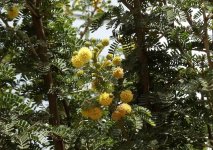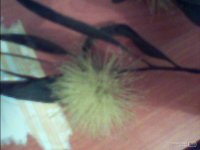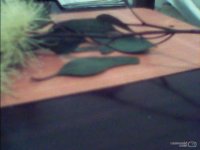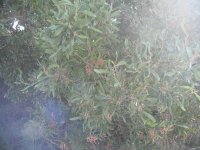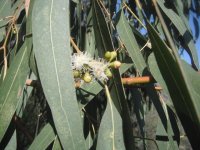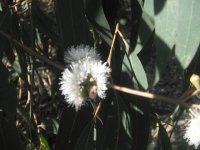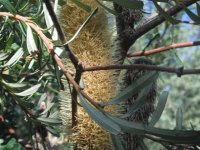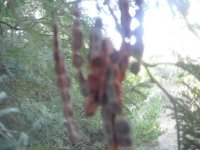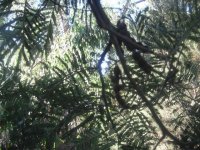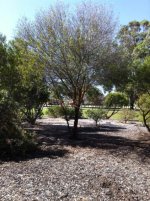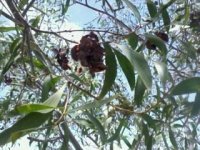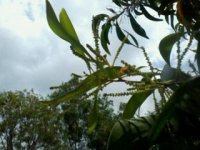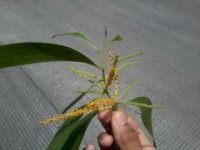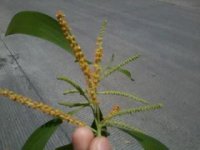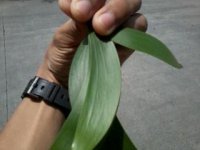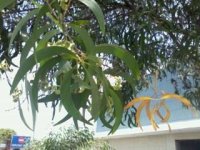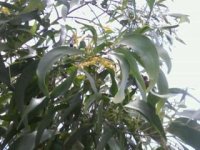-
Members of the previous forum can retrieve their temporary password here, (login and check your PM).
You are using an out of date browser. It may not display this or other websites correctly.
You should upgrade or use an alternative browser.
You should upgrade or use an alternative browser.
Botany Acacia and Mimosa Identification Thread
- Thread starter endlessness
- Start date
Growing logs with advice and results.
Migrated topic.
radmotion
Rising Star
Hello everyone, i need a I.D. Help.
These grew on a tall tree, The flowers come out of a crown like structure, which is connected to branches, the leafs are darkish green, the branch is brown, the hairs / flowers aren't very bushy, These come from <AUSTRALIA, VICTORIA>
Sorry for the terrible quality. Thanks.
These grew on a tall tree, The flowers come out of a crown like structure, which is connected to branches, the leafs are darkish green, the branch is brown, the hairs / flowers aren't very bushy, These come from <AUSTRALIA, VICTORIA>
Sorry for the terrible quality. Thanks.
Attachments
radmotion..looks like a eucalypt or something in the myrtaceae family generally..there are aromatic/medicinal oils in this family, but not really alkaloids..
the flowers are way too large and open (not dense) and the leaves look like, well, true leaves, not phyllodes (as acacias have)
..the photos throughout this thread are a guide for what to be looking out for of interest..
..hey there yatiqiri, nice tree..!
i'm still checking out a few possibilities of what it could be, but Acacia constricta is a good possibility..
..it's naitve to Mexico and the southwestern United States (incl. the Sonoran desert), known as the whitethorn acacia..in arid conditions it is a stragglier, shrub-like tree..
alkaloid test references are scant, with a single report of it containing ß-methyl-phenethylamine
[Glasby, John Stephen (1991). Dictionary of Plants Containing Secondary Metabolites. CRC Press. pp. 2. ISBN 0850664233.]
wira said "..the identification of the alkaloid present was tentative."
..there are 43 Acacias (incl. introduced) recorded from Bolivia, in this list: fabaceae bolivia checklist click on 'acacia' in fabaceae list
..a real beauty you've spotted there, whatever's in it, yatiqiri..!
[EDIT: i now believe the tree is likely Acacia tortuosa (found Carribean, northern South America) see bottom p12]
the flowers are way too large and open (not dense) and the leaves look like, well, true leaves, not phyllodes (as acacias have)
..the photos throughout this thread are a guide for what to be looking out for of interest..
..hey there yatiqiri, nice tree..!
i'm still checking out a few possibilities of what it could be, but Acacia constricta is a good possibility..
..it's naitve to Mexico and the southwestern United States (incl. the Sonoran desert), known as the whitethorn acacia..in arid conditions it is a stragglier, shrub-like tree..
alkaloid test references are scant, with a single report of it containing ß-methyl-phenethylamine
[Glasby, John Stephen (1991). Dictionary of Plants Containing Secondary Metabolites. CRC Press. pp. 2. ISBN 0850664233.]
wira said "..the identification of the alkaloid present was tentative."
..there are 43 Acacias (incl. introduced) recorded from Bolivia, in this list: fabaceae bolivia checklist click on 'acacia' in fabaceae list
..a real beauty you've spotted there, whatever's in it, yatiqiri..!
[EDIT: i now believe the tree is likely Acacia tortuosa (found Carribean, northern South America) see bottom p12]
robertus-spagyricus
Rising Star
Hi, first post here, other than my intro essay..
Trying to I.D an Acacia here. Been all through this thread, examined every photo, and examined innumerable photos internet-wide, but still not.quite.sure.
Tell me what you think - within the species mentioned in this thread it is something close to:
A. Cyclops , A. Confusa , A. Saligna , A. Macradenia , A. Provincialis , A. Complanata
Or perhaps none of them. This is in suburban Melbourne and I scarcely doubt there would be a foreign species here.
Notice the phyllode 'balls' aren't sort of 'puffy' like most of these other species. I am lacking in terminology here, so I'll just put the photos up.
It definitely has 'the smell' about it - but upon burning nothing. It feels in my hand like there is some alkaloid content. Whaddayareckon?





Trying to I.D an Acacia here. Been all through this thread, examined every photo, and examined innumerable photos internet-wide, but still not.quite.sure.
Tell me what you think - within the species mentioned in this thread it is something close to:
A. Cyclops , A. Confusa , A. Saligna , A. Macradenia , A. Provincialis , A. Complanata
Or perhaps none of them. This is in suburban Melbourne and I scarcely doubt there would be a foreign species here.
Notice the phyllode 'balls' aren't sort of 'puffy' like most of these other species. I am lacking in terminology here, so I'll just put the photos up.
It definitely has 'the smell' about it - but upon burning nothing. It feels in my hand like there is some alkaloid content. Whaddayareckon?





cheif hobo stank
Rising Star
robertus-spagyricus said:Whaddayareckon?

Hi robertus that plant is Tristaniopsis laurina, that distinctive smell is quite likely to be some indole/skatole/tryptophan derivative
..that's the plant reverting to it's 'juvenile' leaf form..it's probably Acacia melanoxylon which often does this even when a meter or two tall..all acacias start as babies with bi-pinnate leaves like that...
Muttley
Rising Star
I was trying to identify this tree. It is very common in some areas of Portugal, actualy they grow uncontrolled and are considered invasive.
(all the pictures are zoomable.)

I'm sure it is a Paraserianthes lophantha but your opinion is appreciated. It looks alot like what is on post #72 and #125



Leaves are very curly. I think thats because this season is unusualy cold and dry.

(all the pictures are zoomable.)

I'm sure it is a Paraserianthes lophantha but your opinion is appreciated. It looks alot like what is on post #72 and #125



Leaves are very curly. I think thats because this season is unusualy cold and dry.

radmotion
Rising Star
Attachments
-
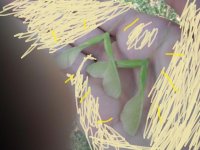 PLANT+ONE+PART+TWO.JPG44.8 KB · Views: 0
PLANT+ONE+PART+TWO.JPG44.8 KB · Views: 0 -
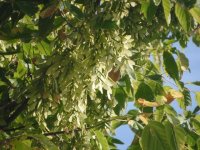 PLANT+ONE.JPG66.3 KB · Views: 0
PLANT+ONE.JPG66.3 KB · Views: 0 -
 use1.JPG75.3 KB · Views: 0
use1.JPG75.3 KB · Views: 0 -
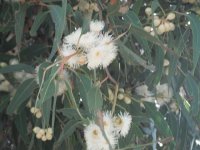 use2.JPG44.3 KB · Views: 0
use2.JPG44.3 KB · Views: 0 -
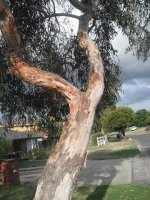 use3.JPG52.8 KB · Views: 0
use3.JPG52.8 KB · Views: 0 -
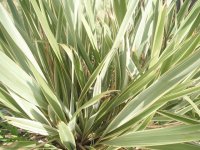 APPARENTLY+PHALRIS.JPG74.2 KB · Views: 0
APPARENTLY+PHALRIS.JPG74.2 KB · Views: 0 -
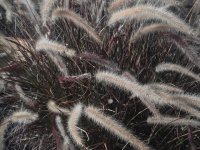 Another+phalris.JPG83.1 KB · Views: 0
Another+phalris.JPG83.1 KB · Views: 0 -
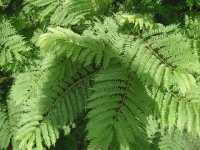 AC2.JPG87.1 KB · Views: 0
AC2.JPG87.1 KB · Views: 0 -
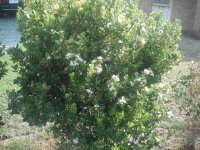 A+GV.JPG90.4 KB · Views: 0
A+GV.JPG90.4 KB · Views: 0 -
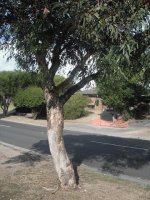 A+VB.JPG49.4 KB · Views: 0
A+VB.JPG49.4 KB · Views: 0 -
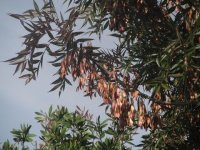 A+VG.JPG71.2 KB · Views: 0
A+VG.JPG71.2 KB · Views: 0 -
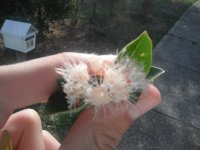 A+VG2.JPG34.5 KB · Views: 0
A+VG2.JPG34.5 KB · Views: 0 -
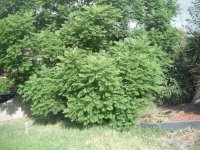 AC1.JPG100.2 KB · Views: 0
AC1.JPG100.2 KB · Views: 0
radmotion
Rising Star
I once again went out for a walk. And i think i finally found a Plant that DOES contain DMT!
Im Extremely positive i have seen these bean plants around Dmt forums / sites.

Im Extremely positive i have seen these bean plants around Dmt forums / sites.
Attachments
..hi radmotion, unfortunately none of these in the first posts are acacias..the last couple are Eucalypts, stipa robusta (grass), agaves, also probably Jacaranda, a Callistemon above that, and the top one i'll have to trigger my memory..all nice plants, though chemically unknown..
i highly recommend studying the photos and information in this thread regarding acacia i.d.
..i'm pleased to say, yes, the bottom 2 pics are a good bet for Acacia cyclops..the flowers would settle it...
the others..the first is actually quite interesting..can you send a clearer photo of just the leaf..?
below it are a banksia (really cool plants, but no dmt) and a eucalypt (probably no dmt)
ps. radmotion thanks for reducing the file size of the images you posted earlier..makesthe page load a lot easier...
i highly recommend studying the photos and information in this thread regarding acacia i.d.
..i'm pleased to say, yes, the bottom 2 pics are a good bet for Acacia cyclops..the flowers would settle it...
the others..the first is actually quite interesting..can you send a clearer photo of just the leaf..?
below it are a banksia (really cool plants, but no dmt) and a eucalypt (probably no dmt)
ps. radmotion thanks for reducing the file size of the images you posted earlier..makesthe page load a lot easier...
looks a lot like a floribunda? speak of the devil 
E
Rising Star
Hi all !
I would like to have your opinions on these species.
I believe these all belong to the Fabaceae family, but I have no idea if they are Mimosa or Acacia and even less about the precise species.
I've tooken these photos in southern Colombia at ca. 2500 m above see level.
Number 1




Number 2








Number 3




Number 4





I think that N°1 is Acacia baileyana var. purpurea. If it is true I red that alkaloids content was ca. 0.02% tryptamine and β-carbolines. Thus not beeing a very interesting source of DMT.
I have no clue for the three other species. N°3 seems to be a Legume but not an Acacia.
I will be happy to have your opinions ...
Thanks.
E.
I would like to have your opinions on these species.
I believe these all belong to the Fabaceae family, but I have no idea if they are Mimosa or Acacia and even less about the precise species.
I've tooken these photos in southern Colombia at ca. 2500 m above see level.
Number 1




Number 2








Number 3




Number 4





I think that N°1 is Acacia baileyana var. purpurea. If it is true I red that alkaloids content was ca. 0.02% tryptamine and β-carbolines. Thus not beeing a very interesting source of DMT.
I have no clue for the three other species. N°3 seems to be a Legume but not an Acacia.
I will be happy to have your opinions ...
Thanks.
E.
..welcome endophytik, the first is indeed A. baileyana, but there are a few unpublished tests of this species indicating larger amounts of tryptamines/betacarbolines..a single reference to low percentages should never be treated as definitive information as to what is likely to be in a plant..i would say it's well worth experimenting with A. baileyana..we need more data..only if repeated multiple tests found little alkaloid would i accept a statement of low alkaloid content..i have even been told by one fairly good source that it has yielded DMT..
..off the top of my head..2. is possibly a variety Acacia decurrens or A.dealbata (naturalized in Sth. America), a hybrid, or perhaps a form of A. nilotica (also in northern Sth. America) ..will have to compare pods and flowers carefully, plus number of pinnae) ..3. is (i think) a Senna (Fabaceae) many with laxative properties,
and 4. is a Callistemon, australian natives in Myrtaceae known as 'Bottlebrushes'..mainly cineol type volatile oils similar to eucalypts in them..natural insect repellent..
..off the top of my head..2. is possibly a variety Acacia decurrens or A.dealbata (naturalized in Sth. America), a hybrid, or perhaps a form of A. nilotica (also in northern Sth. America) ..will have to compare pods and flowers carefully, plus number of pinnae) ..3. is (i think) a Senna (Fabaceae) many with laxative properties,
and 4. is a Callistemon, australian natives in Myrtaceae known as 'Bottlebrushes'..mainly cineol type volatile oils similar to eucalypts in them..natural insect repellent..
E
Rising Star
nen888, thank you for these insights ! The botany of the Acacia genus seems complex :shock:
Oh, and today I went for other pics and oooh surprise I found two other interesting "acacia-like" species !!!
Here go the pics :
Number 5





Number 6











Number 6bis

So I've been reading this thread attentivly and it seems to me that these two species correspond to species found by yatiqiri. This would seem somehow logical, from the geographical point of view. I think he is from La Paz, Bolivia and I found those in a relatively high (2600 m) city of southern Colombia ...
So N°5 would be Paraserianthes lophantha subsp. lophantha as identified by nen888 here.
Anything interesting inside this bark ?! :roll:
And N°6 would be .... ehhh ... A.salinga ? A. pycnantha ? A. macradenia ? A. obliquinervia ? A. retinodes ?
I have been reading this thread started by yatiqiri wich was very interesting and I think I will extract the bark of this guy ...
One character seems to differ from yatiqiri's specimen tough : i didn't notice this marked middle vein on the phyllodes.
Number 6bis , seems to be the same species with much more narrow and curved phyllodes tough ...
I will again be gratefull for your opinions !
OK. I would discard A. velutina and A. macracantha... because of the spines. A. velutina seems to bear little spines and N°2 is devoid of it. So maybe A. ampeloclada ... but no manner to find a bigger pic so it's hard to tell. Any other specific part of the tree I could picture to help you ?nen888 said:so, with acacias of South America being such a rich area for both botanical and phytochemical research, here's two bipinnate species (endophytik's photo 2 being bipinnate) which could be in Coumbia..
..the 'type' specimens for Acacia ampeloclada, and Acacia velutina..below them A. macracantha (but it, as mentioned, has thorns on branches and trunk) ..it's very wide distribution (Florida to Sth America) suggests there may be different varieties..
Oh, and today I went for other pics and oooh surprise I found two other interesting "acacia-like" species !!!
Here go the pics :
Number 5





Number 6











Number 6bis

So I've been reading this thread attentivly and it seems to me that these two species correspond to species found by yatiqiri. This would seem somehow logical, from the geographical point of view. I think he is from La Paz, Bolivia and I found those in a relatively high (2600 m) city of southern Colombia ...
So N°5 would be Paraserianthes lophantha subsp. lophantha as identified by nen888 here.
Anything interesting inside this bark ?! :roll:
And N°6 would be .... ehhh ... A.salinga ? A. pycnantha ? A. macradenia ? A. obliquinervia ? A. retinodes ?
I have been reading this thread started by yatiqiri wich was very interesting and I think I will extract the bark of this guy ...
One character seems to differ from yatiqiri's specimen tough : i didn't notice this marked middle vein on the phyllodes.
Number 6bis , seems to be the same species with much more narrow and curved phyllodes tough ...
I will again be gratefull for your opinions !
E
Rising Star
I have been googleimaging and found seeds of N°6 to be very similar to A. cyclops's seeds.
On the wiki "Both the common and species names refer to the appearance of the pods when first open in late spring: each shiny black seed is encircled by a thick orange-red stalk, resembling a bloodshot eye."
Nevertheless these seems to be realtively small trees : 3-4 m. The species I have here is huge (let's say 15-20 m)
...
:roll:
Any clue ?
On the wiki "Both the common and species names refer to the appearance of the pods when first open in late spring: each shiny black seed is encircled by a thick orange-red stalk, resembling a bloodshot eye."
Nevertheless these seems to be realtively small trees : 3-4 m. The species I have here is huge (let's say 15-20 m)
...
:roll:
Any clue ?
pablokabute
"Look up, look within, it's SPACE and it's YOU."
Hello, I need help identifying an acacia. Here's the pic, i forgot to take pics of the seeds but i know what it looks like, its pure black with bright orange appendage, like a string or something.


Attachments
..hi pablokabute, i'm fairly certain the above tree is Acacia auriculiformis..tentative 5meoDMT in stem bark..
& like ۩ said on p.19, be kind to trees..
and endophytik, the jugary glands make it fairly certain that it is Acacia dealbata spp. dealbata..
.
& like ۩ said on p.19, be kind to trees..
and endophytik, the jugary glands make it fairly certain that it is Acacia dealbata spp. dealbata..
.
Similar threads
- Replies
- 4
- Views
- 103
- Replies
- 0
- Views
- 155
- Replies
- 6
- Views
- 721
- Replies
- 3
- Views
- 597

